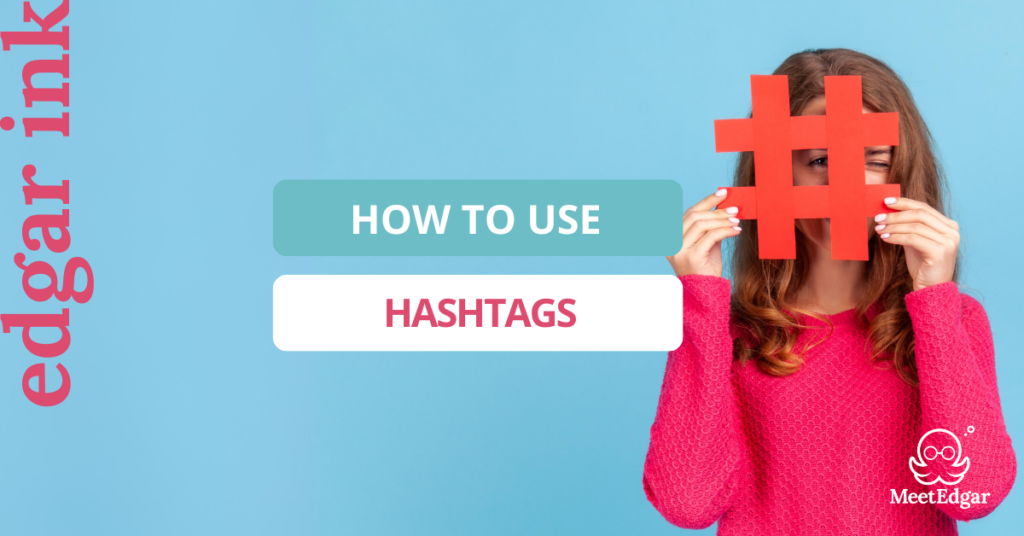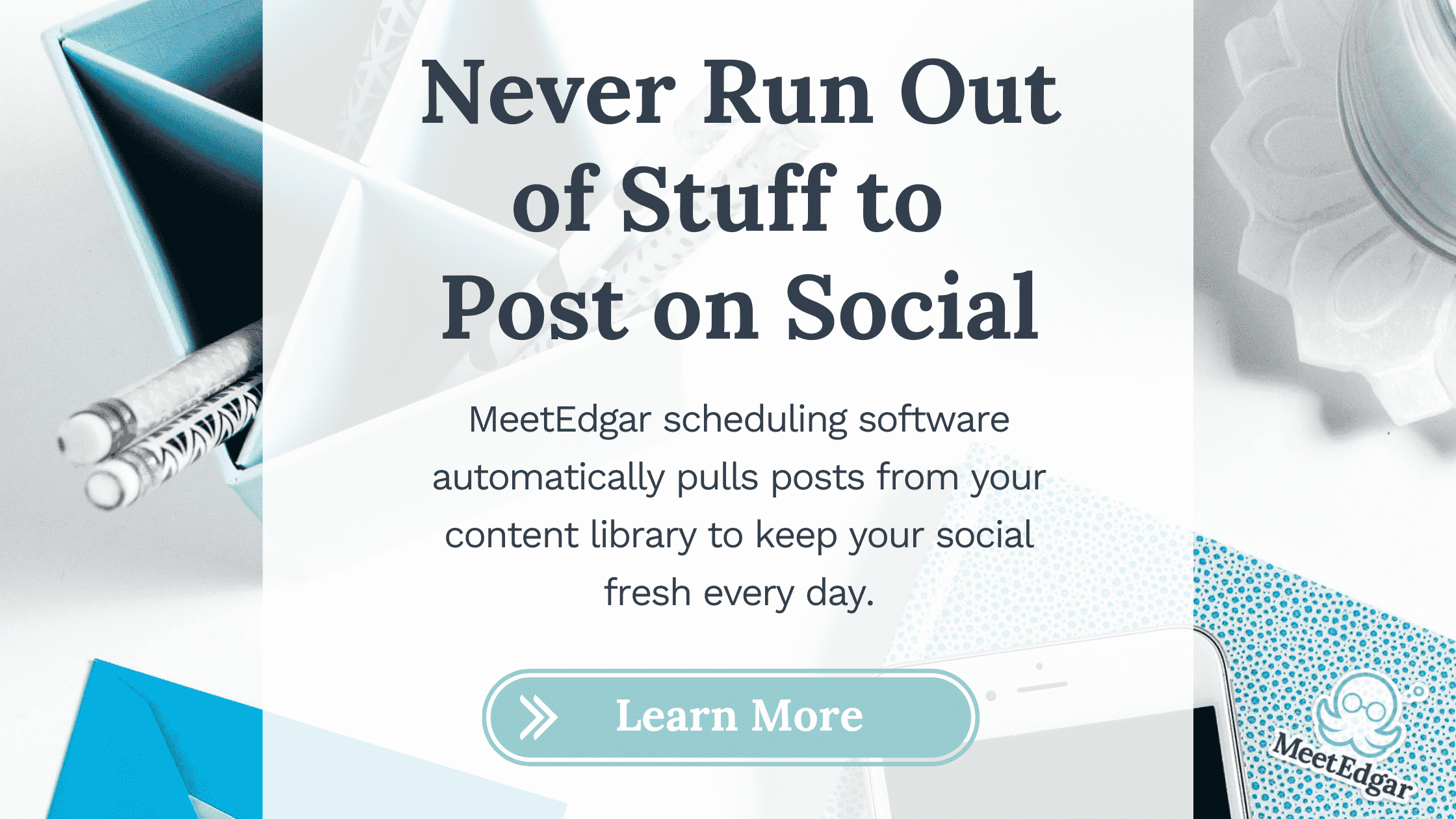Remember when hashtags weren’t a thing and the hashtag symbol was only known as the number sign?
Yeah, we don’t really remember it either.
What are hashtags used for?
Hashtags have not only become part of our vocabulary but they’ve become a key piece of any successful social media strategy. Hashtags started on Twitter as a way to differentiate between groups of topics within tweets. Today, we also use hashtags on Facebook, LinkedIn, Instagram, Pinterest, and YouTube.
Hashtag use can help you join new conversations, reach new users, grow your audience and increase engagement, for instance, Tweets with hashtags get 2x more engagement than those without.
How to use hashtags correctly
You should be using hashtags but you’ve got to use them the right way. Too many people don’t know the best way to use hashtags and that can actually hurt their content. It’s super frustrating to think you’re following hashtag best practices but only to see zero results for your effort so we’re going to spare you that pain (and wasted time!).
Here’s a guide to hashtag use that won’t hurt your reach, make you look spammy, or impact your content.
How to make hashtags
When making your own hashtags, all you need to do is type the hashtag symbol # followed by the word you want to hashtag.
You can hashtag anything you want, so whether it’s your brand name or a concept. The fun thing about hashtags is you decide.
Different types of hashtags
Hashtags are keywords or phrases that follow a # sign with no spaces and they can be broken down into 3 different categories:
Content Hashtags – As the name suggests, these are hashtags related to your content or industry. They are not trending or brand-specific and they are your best way to join new conversations and reach new users.
For example, MeetEdgar’s content hashtags include #socialmediamarketing and #digitalmarketing. These tags aren’t unique to us but they relate to the content we post.
Trending Hashtags – Trending hashtags are related to a recent popular conversation. These can help you increase your reach but be careful with joining trending hashtags. Make sure you do your research to find out why something is trending before you start using the tag so you don’t misinterpret why something is trending which can lead to some major social media blunders.
Branded Hashtags – Branded hashtags are your brand’s hashtag that you create and use. It’s important you encourage your audience to use them as well. You can use these on all of your posts or you can create event or promotion-specific hashtags too.
Every platform uses hashtags in a slightly different so you need to change up your hashtag depending on the platform. Let’s dig into what that means, shall we?
How to use Instagram hashtags
The use of hashtags on Instagram is popular, so we’ll start there. You can use hashtags in every part of Instagram including your bio, your posts (no more than 30) and your stories (no more than 10).
Your posts are the most important place to add hashtags. TrackMaven recommends using 9-12 hashtags in your posts for the best engagement but we recommend doing some experimenting on your own to understand what your audience likes.
It’s important that wherever you are using hashtags, you are mixing them up consistently. Instagram’s community guidelines warn against “posting repetitive comments or content” so you can’t be posting the same 30 hashtags on every post. We recommend splitting your hashtags into 3-4 groups and rotating through them on each post.
Now the big question for using hashtags on Instagram is what hashtags should you use?
There are some people who use #hashtags #on #every #word and we don’t recommend following that strategy. We recommend combining a mix of popular hashtags and niche hashtags to create your perfect hashtag groups. Popular hashtags can help expand your reach and niche hashtags will reach a more targeted audience. You need both to reach a diverse but engaged audience.
[Looking for the most popular hashtags? We found them for ya!]
Now to actually find those post-perfect hashtags, you’ve got to do a little digging. Look at the hashtags your competitors and audience use. Search a few keywords related to your industry. If it’s a bigger hashtag, then Instagram will show you “related hashtags” in your search. You can then search for some of those.
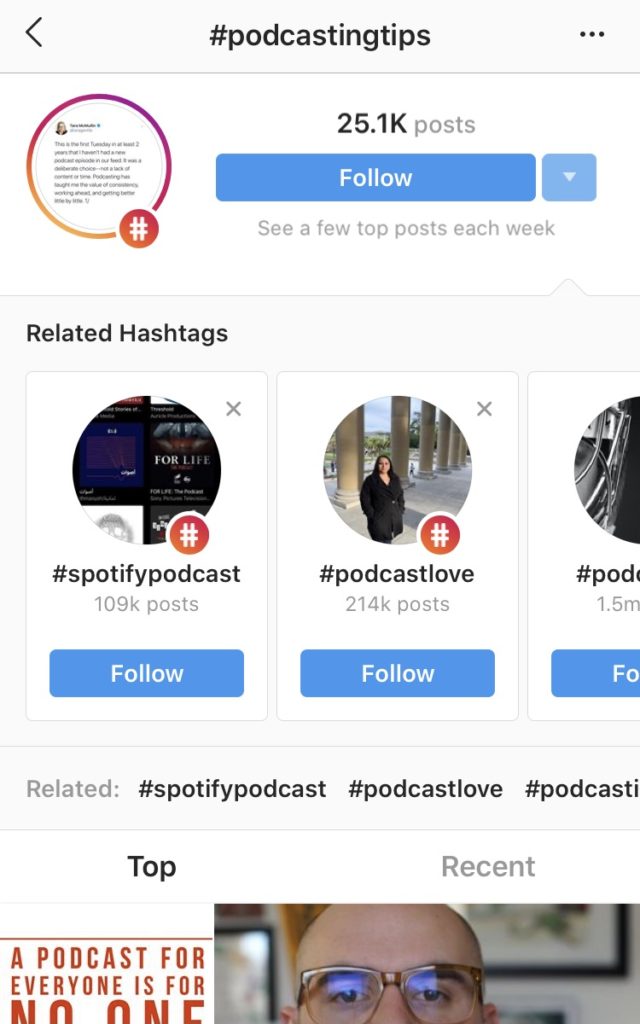
During your search, you should be on the lookout for a few things:
- How popular is the hashtag and how many posts are tagged with it?
- The types of content tagged with that hashtag. Is it quality content? Does it look like content your audience would interact with?
- What are the “Top Posts” on the hashtag search page? What is their content and who is posting? How big is the audience for the users reaching the top posts in the hashtag search page?
By doing this audit, you can understand if your content is a good fit for a hashtag, if the hashtag is a good fit for your audience and if you have a shot at reaching the “Top Posts” part of the search page.
You can also follow hashtags on Instagram so posts with a specific hashtag will show up in your feed. This way you can engage with other posts being shared around that hashtag and connect with other users sharing posts around your industry or topics.
You can tell a post is from a hashtag follow because the hashtag will be in bold on top of the user who shared the post.
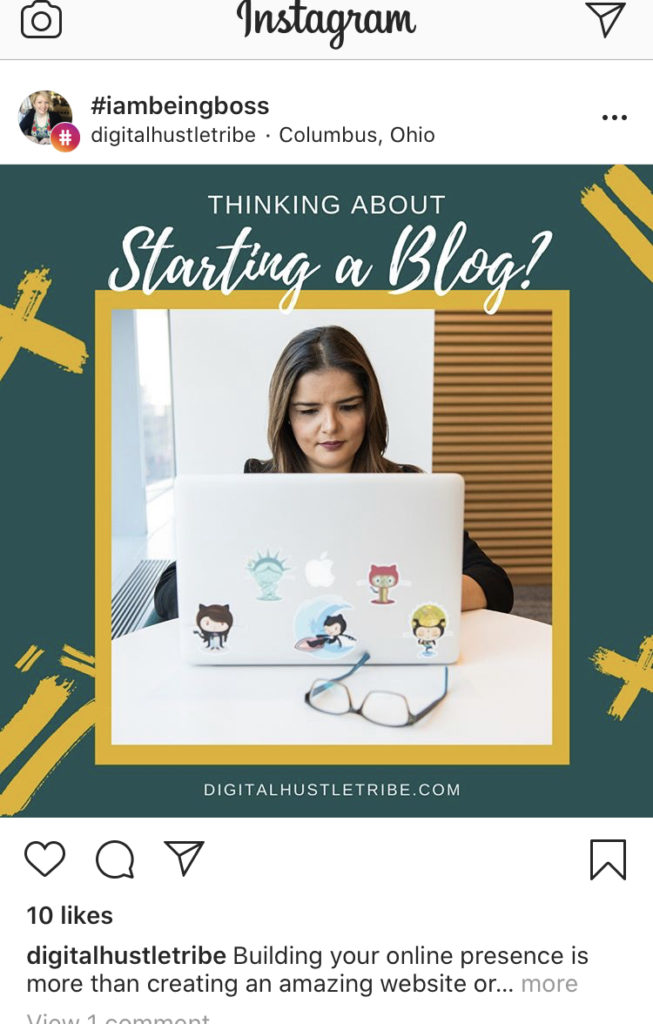
Finally, be sure you’re always measuring your hashtags. If you select the “View Insights” button at the bottom of your post and scroll down, you can see how much of your reach is from hashtags. Keep an eye on which of your hashtag groups are reaching the biggest audience or if your reach starts to decline, it may be time to search out some new hashtags. Hashtags will always be evolving on Instagram so measure and adjust as needed.

Should you hashtag on Facebook?
As opposed to its sibling site, the guidelines and best practices about using hashtags on Facebook are far less detailed and Facebook doesn’t give a ton of guidance on when to use hashtags on their site.
So, how to use a hashtag on Facebook? Most experts agree that hashtags don’t give your content the boost in reach or engagement that they do on Instagram and it’s recommended if you do use hashtags in a Facebook post, only use 1-2 with each post.
Branded and campaign-related hashtags are your best bet for succeeding with hashtags on Facebook.
Here’s a great example of how to add hashtags on Facebook; the Honest Company uses two branded hashtags in most of their posts: #ThatsHonest and #HonestCompany.

You can also use hashtags for events like Adobe does for their #AdobeSummit.

Or you can use popular and trending hashtags like DSW did on #InternationalWomensDay.
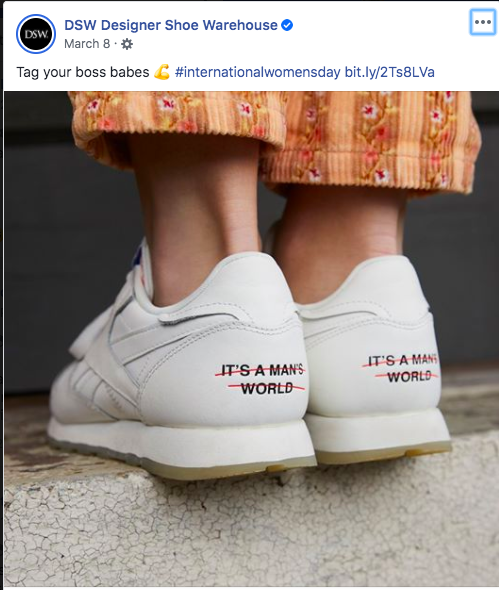
Using hashtags on Facebook makes your content more searchable. The platform uses hashtags to group and categorize content that is about the same subjects. This means that potential new followers can find your content if they search for something related.
So you don’t need to completely ignore hashtags on Facebook but you should be more strategic about how you use them.
How to use Twitter hashtags
Twitter is the birthplace of hashtags so obviously, they’re #important. 😉
According to data from Linchpin SEO, tweets with hashtags receive twice as many retweets as tweets without hashtags. But that doesn’t mean you have to cram every hashtag into a tweet. Data from another study also shows using too many hashtags has been proven to hurt social media post engagement and reach.
But hashtags do more than increase engagement on Twitter. They’re also useful for finding and joining conversations. You can easily search hashtags in the Twitter search function and it will pull up the most recent and top tweets including those hashtags. You can see what others are tweeting about a specific topic, add your own thoughts and join in on different conversations.
Since Twitter is the fastest-moving platform, you can also use hashtags to your advantage by joining in on trending or popular hashtags. Remember to always check what others are saying around the hashtag before you tweet! You can also use a tool like Hashtagify to find trending and popular hashtags in your industry.
You can also check trending topics and hashtags in the explore section of your Twitter homepage:
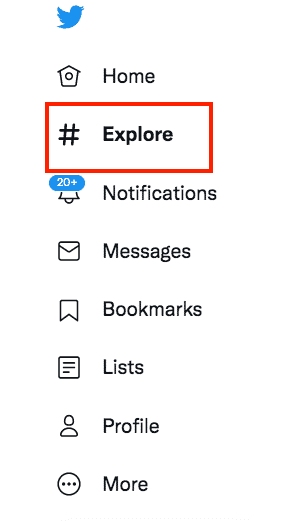
How to add hashtags on Twitter? Open a new tweet and type the # symbol followed by the words you want to hashtag. Twitter will then give you suggestions of popular hashtags you may want to add, like this:
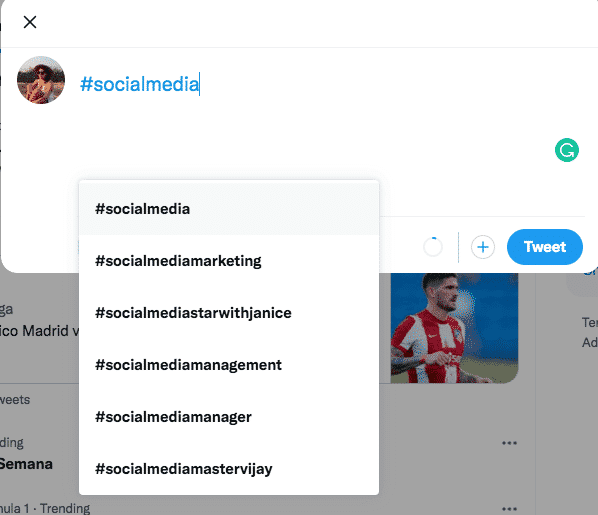
Does LinkedIn use hashtags?
LinkedIn joined the hashtag party by adding clickable hashtags to its platform back in 2016. Even so, many content creators are still figuring out how to use a hashtag correctly on LinkedIn.
Most brands are using hashtags on LinkedIn similarly to how they do on Instagram. You can follow specific hashtags so trending or popular hashtag posts will show up in your feed. You can find hashtags by using the search bar on LinkedIn. LinkedIn will offer you related hashtags to your search.
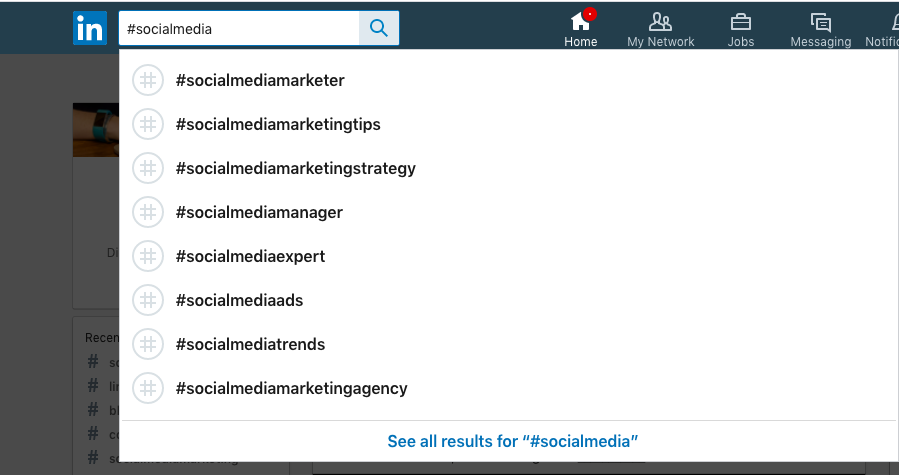
Once you’ve found a hashtag that relates to your brand, you can see how many people are following it and see the top or latest posts with those hashtags.
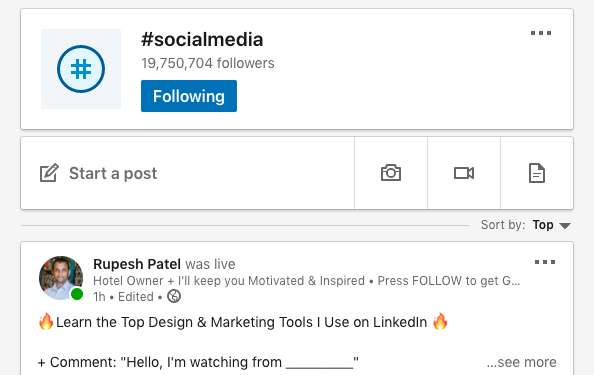
After you follow a hashtag, it will be added to your hashtag list on your sidebar. You can easily click from there when you want to engage with other posts.
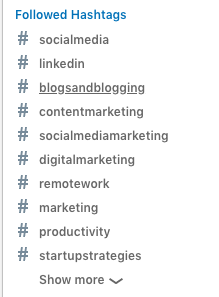
While there have not been any exhaustive studies for LinkedIn hashtag best practices, experts generally recommend using 3-4 content hashtags in each post. People aren’t usually searching for branded or trending hashtags on LinkedIn. They’re using it to find more information about their industry so instead of using the #MeetEdgar tag, we would use #socialmediamarketing or #onlinemarketing.
One of the most important uses of hashtags on LinkedIn is to start meaningful conversations with people interested in the same topics as you.
You should also use post-specific and industry-specific hashtags in your posts. So if we were posting about personal branding on LinkedIn, we might use #socialmedia and #onlinemarketing because that’s related to our industry but we would also include #personalbranding and #linkedIn because they are post-specific.
The more niche hashtags you use, the more likely you are to find people with similar interests that you can collaborate with.
Check how many uses a certain hashtag has before you use it. If a hashtag has millions of uses, it’s unlikely your post will be found. For example, #socialmedia is very broad and will have millions of uses. If you want to be more specific, use the hashtag #socialmediaforsolopreneurs this will reach a much more targeted audience.
Another effective strategy for hashtagging on LinkedIn is to start your own hashtag. Create a specific hashtag that is relevant to your audience that they can use when they share content. This can help drive some buzz about your brand and will also make it easy for your followers to find all your content.
The TL;DR on how to hashtag
The long story short on how to use a hashtag right is that you should be using it in your content.
How you use hashtags will depend on the platform and your industry. Follow best practices per platform and remember to engage! Use hashtags as an engagement tool to find other similar accounts and to join in conversations. The more active you are across all social media platforms, the more successful you will be in growing your audience.

